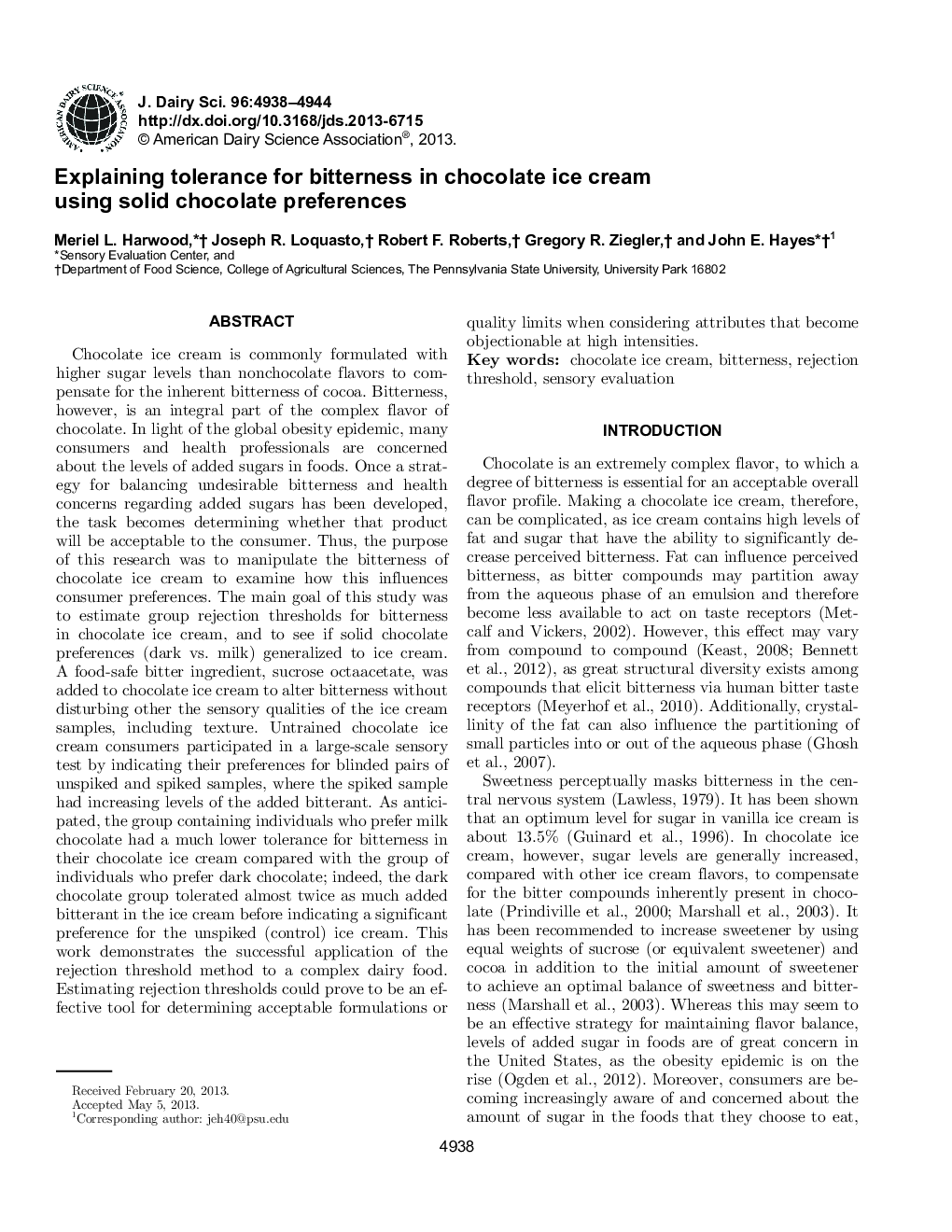| کد مقاله | کد نشریه | سال انتشار | مقاله انگلیسی | نسخه تمام متن |
|---|---|---|---|---|
| 2438874 | 1108051 | 2013 | 7 صفحه PDF | دانلود رایگان |

Chocolate ice cream is commonly formulated with higher sugar levels than nonchocolate flavors to compensate for the inherent bitterness of cocoa. Bitterness, however, is an integral part of the complex flavor of chocolate. In light of the global obesity epidemic, many consumers and health professionals are concerned about the levels of added sugars in foods. Once a strategy for balancing undesirable bitterness and health concerns regarding added sugars has been developed, the task becomes determining whether that product will be acceptable to the consumer. Thus, the purpose of this research was to manipulate the bitterness of chocolate ice cream to examine how this influences consumer preferences. The main goal of this study was to estimate group rejection thresholds for bitterness in chocolate ice cream, and to see if solid chocolate preferences (dark vs. milk) generalized to ice cream. A food-safe bitter ingredient, sucrose octaacetate, was added to chocolate ice cream to alter bitterness without disturbing other the sensory qualities of the ice cream samples, including texture. Untrained chocolate ice cream consumers participated in a large-scale sensory test by indicating their preferences for blinded pairs of unspiked and spiked samples, where the spiked sample had increasing levels of the added bitterant. As anticipated, the group containing individuals who prefer milk chocolate had a much lower tolerance for bitterness in their chocolate ice cream compared with the group of individuals who prefer dark chocolate; indeed, the dark chocolate group tolerated almost twice as much added bitterant in the ice cream before indicating a significant preference for the unspiked (control) ice cream. This work demonstrates the successful application of the rejection threshold method to a complex dairy food. Estimating rejection thresholds could prove to be an effective tool for determining acceptable formulations or quality limits when considering attributes that become objectionable at high intensities.
Journal: Journal of Dairy Science - Volume 96, Issue 8, August 2013, Pages 4938–4944